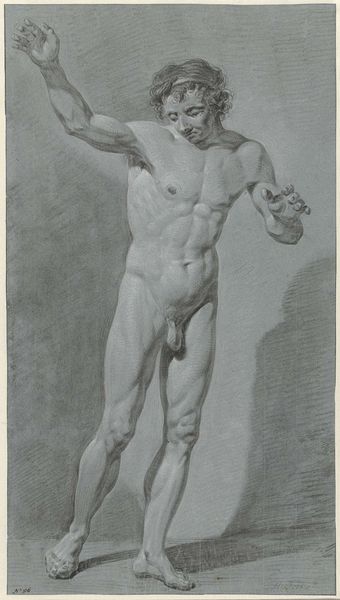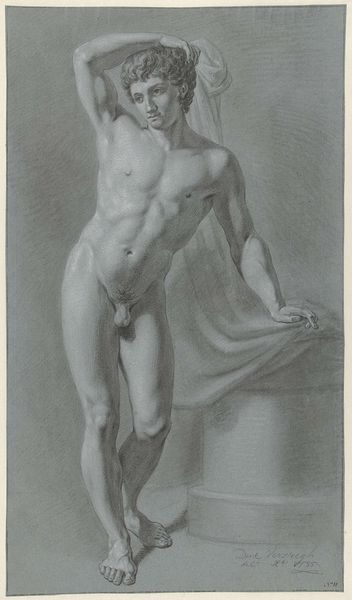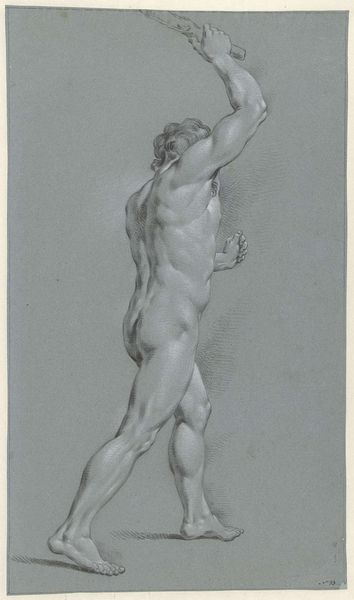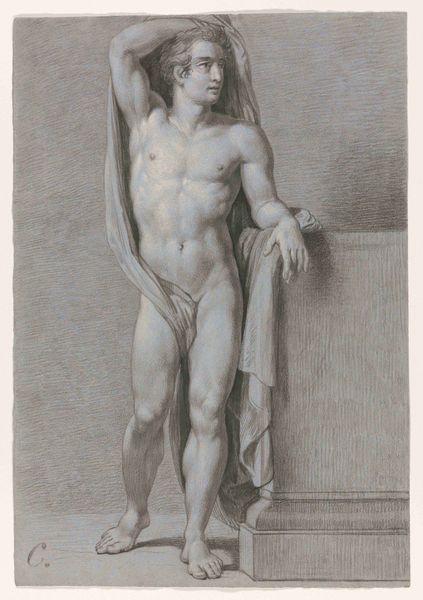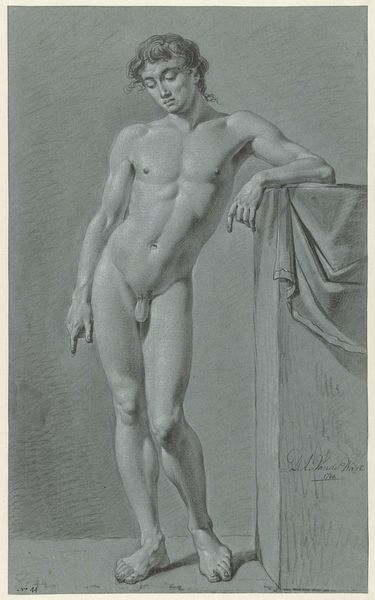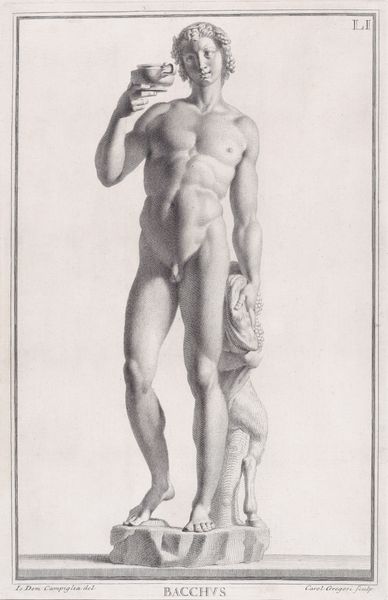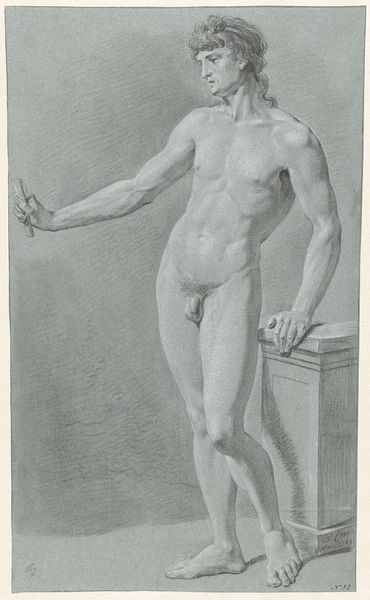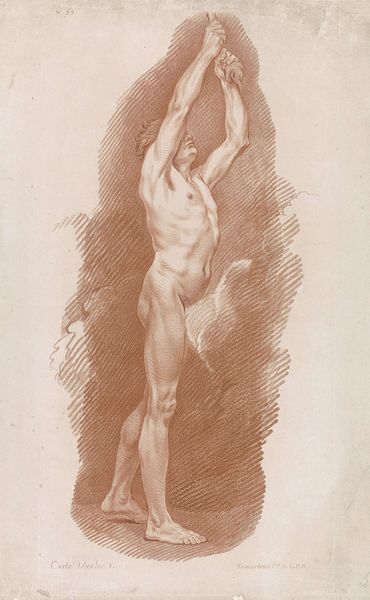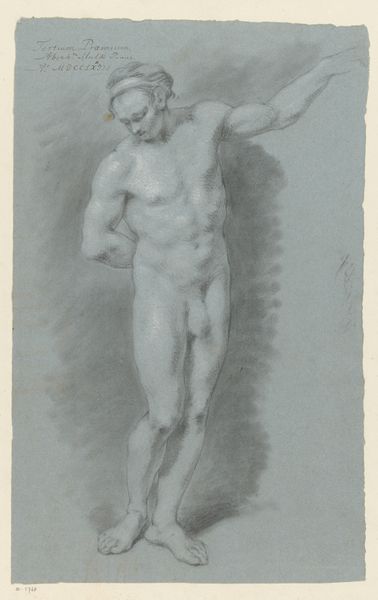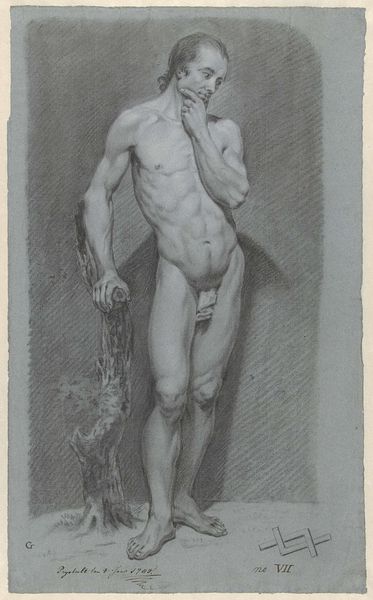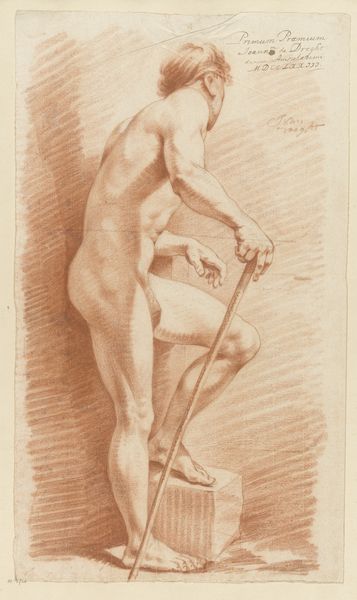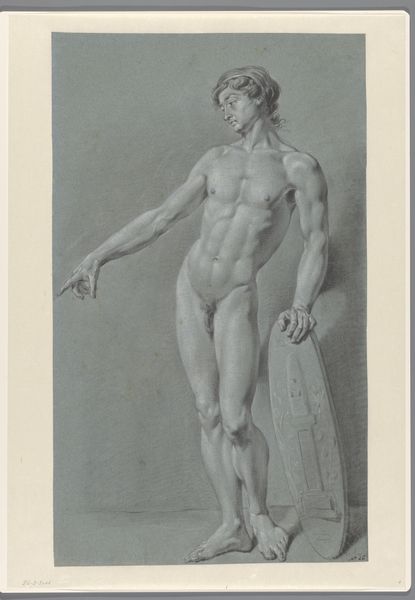
drawing, charcoal
#
drawing
#
charcoal drawing
#
romanticism
#
charcoal
#
history-painting
#
academic-art
#
nude
Dimensions: height 558 mm, width 312 mm
Copyright: Rijks Museum: Open Domain
Editor: Here we have Jacob Smies’ “Standing Male Nude with Cornucopia and Trumpet,” a charcoal drawing from 1803. The figure seems to be suspended in an abstract, undefined space. The lighting feels almost theatrical. What do you see in this piece, beyond the classical references? Curator: It's interesting how you note the theatrical lighting. We have to consider the socio-political landscape of the Netherlands at the turn of the 19th century. The Batavian Republic, heavily influenced by Revolutionary France, was attempting to redefine itself, and imagery played a vital role. Notice how Smies employs the visual language of classical antiquity. The nude male figure, the cornucopia, and the trumpet – they evoke ideas of prosperity and proclamation, carefully constructed narratives designed to promote particular ideologies and civic values. How do you interpret the juxtaposition of the classical with the ambiguous setting? Editor: I guess I see it as trying to ground the idealized form in a contemporary context. The sketchiness contrasts the defined figure, softening it. I suppose, as an academic work, it’s made for practice, not public display, or is that naïve of me? Curator: That's a great question! It forces us to think about the role of the Academy in shaping public taste and artistic production. These life drawings were crucial to artistic training, standardizing a very specific idea of beauty and strength, one rooted in a carefully controlled version of the past, before entering into the ‘History Painting’ realm. How did these standards potentially impact those outside the Academy? Who got left out, or represented through these very specific and controlled poses? Editor: So it’s about what they leave out? The drawing celebrates particular physiques and classical forms while establishing, normalizing that visual vocabulary. Thank you! Curator: Precisely! The drawing invites reflection on how artistic conventions uphold and shape societal norms and power structures, as much as the promotion of civic virtues and idealized figures.
Comments
No comments
Be the first to comment and join the conversation on the ultimate creative platform.
